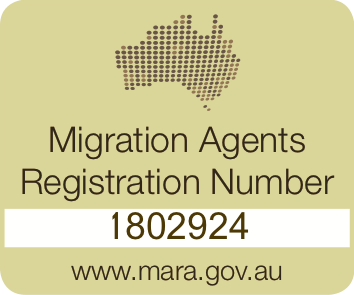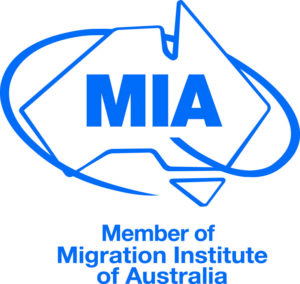The Working Holiday visa (subclass 417) is a temporary visa for young people who want to holiday and work in Australia for up to a year. It aims to encourage cultural exchange and closer ties between Australia and eligible countries.
Here’s everything you need to know about applying for a second Working Holiday visa (subclass 417) in Australia, from the formal application requirements, to the required documents, as well as must-know details about immigration fraud and how you can avoid falling for its traps.
Formal requirements for a second Working Holiday visa application
To apply for a second Working Holiday visa (subclass 417), you must:
- Comply with all the first Working Holiday visa requirements and conditions
- Not previously have held more than one Working Holiday visa
- Complete 3 months of specified work in regional Australia during your first Working Holiday visa (see below for more information)
- Apply before your 31. birthday (the date of your applications
- Hold a valid passport from an eligible country
What is “specified work” and why do I need to do it?
One of the key requirements of a second Working Holiday visa application is that you must have completed at least 3 months of “specified work” in regional Australia during your first Working Holiday visa.
But what does this actually mean?
There are a few components to adequately fulfilling the specified work requirement, including working in an approved industry, performing approved work, in an approved area.
Approved industries that you can complete specified work with include plant and animal cultivation, fishing and pearling, tree farming and felling, mining and construction.
Approved work is paid work that is the primary role or activity performed during employment. For example, this includes fruit picking in orchards, farmwork, landscaping the grounds of a construction site, environmental reforestation work, etc. For full specifications of approved work for each type of industry, see our information page “Second Working Holiday visa”
Approved regional areas are where the work must take place. This includes the entirety of the Northern Territory, South Australia, Tasmania, and specific areas of the other states. Refer to the regional areas section on our information page for the complete list of approved locations.
How do I calculate 88 days of specified work?
To be eligible for a second Working Holiday visa you have to work for at least 3 months or, more precisely, 88 days in one of the above-mentioned jobs and areas for the same number of days a full-time employee would normally work in that specific industry during this 3-months-period.
This does not have to be done in one go or for only one employer. This criterion is considered fulfilled if you’ve worked a total of at least 88 calendar days on a full-time equivalent basis. Therefore, there are a variety of ways, for example:
- Working full-time for three months
- Working part-time for a longer period than three months
- Working several short periods
If you have not worked full-time, you have to convert the worked time to the number of days which are equivalent to a 3 months full-time job.
May I include weekends, holidays or sick days in my calculation?
You should be aware that unpaid days may not be included in the calculation of the 88 days. Therefore, you pay close attention to how your employment contract is designed and what the industry-standard regulations are. If you’ve got a full-time employment contract under industry-specific standards, you may count the whole period including weekends, holidays and sick days (if paid).
If, for example, you are working as a casual worker under a piecework rate you may only count the days you actually worked. Weekends, days you have been sick or days on which you were not able to work due to bad weather may not be included in your calculation.
In case of any doubt, it’s probably better to play it safe and work there for a few extra days, so as not risk having your visa application refused.
How many hours do I need to work per day?
One full day of work is defined as working the minimum number of hours considered industry-standard. Generally, that is 7-8 hours a day, depending on the industry. You may not count long days as two days of specified work.
Does it have to be paid work?
All specified work undertaken after 01.12.2015 must have been paid work, appropriately remunerated (i.e. minimum wage) with supporting evidence (e.g. payslips). If you have completed your specified work before 01.12.2015, voluntary work can also be counted.
Why should I partake in this “specified work”?
Aside from enabling you to be eligible for a second year’s stay in Australia, undertaking this work brings other benefits as well. It’s a fantastic learning opportunity to try new skills, work alongside Aussie folks, and earn a decent wage at the same time. With a minimum wage of A$18.29, this is just the start!
Official documents required to get a second Working Holiday visa
When applying for a second Working Holiday visa, you’ll need to provide official documents/evidence to prove that you fulfil the requirements listed above. To reduce possible delays in processing, be prepared and collect all required documents before lodging your application.
Along with the documents you already had to provide for your first Working Holiday visa, you will require evidence of completion of “specified work” like pay slips and the employment verification form 1263. Please note that documents should be officially issued or signed by the employer.
Don’t be too casual about the specified work requirement
Browse through almost any Australian visa-related online forum, and you’re sure to find people bragging about getting their second year visa without doing their farm or regional work, or only getting by with a portion of it. Some may claim they paid their employers to fabricate their work evidence, while others say they just made it up or lied about how much work was completed. Many assert they simply used the information from friends or fellow backpackers when filling out their application.
These types of behaviours can have severe consequences when detected by the Australian Department of Home Affairs. Punishments include:
- Visa cancellation
- Deportation
- Exclusion period of several years (being banned from applying for another Australian visa for several years)
- Negative immigration history (since former visa cancellations have to be disclosed in every subsequent visa application, not just for Australian visas)
- Criminal charges
The Department of Home Affairs have established a task force to target Working Holiday visa fraud, closely scrutinising applicants and their corresponding applications on an ongoing basis to ensure everyone is following the requirements honestly, consistently and in accordance with immigration law.
Applicants for a second Working Holiday visa should be careful and truthful when applying, to not risk any of the harsh consequences arising from committing immigration fraud. The consequences are extremely serious and is definitely not worth the risk.
Ready to get started?
Are you keen to spend another fantastic year in the beautiful country of Australia, with its warm, sunny climate and jovial, welcoming people? Definitely consider applying for a second Working Holiday visa, and make sure you’re honest throughout the application process. Ensure you’re eligible and fulfil any requirements in advance for a stress-free experience!








